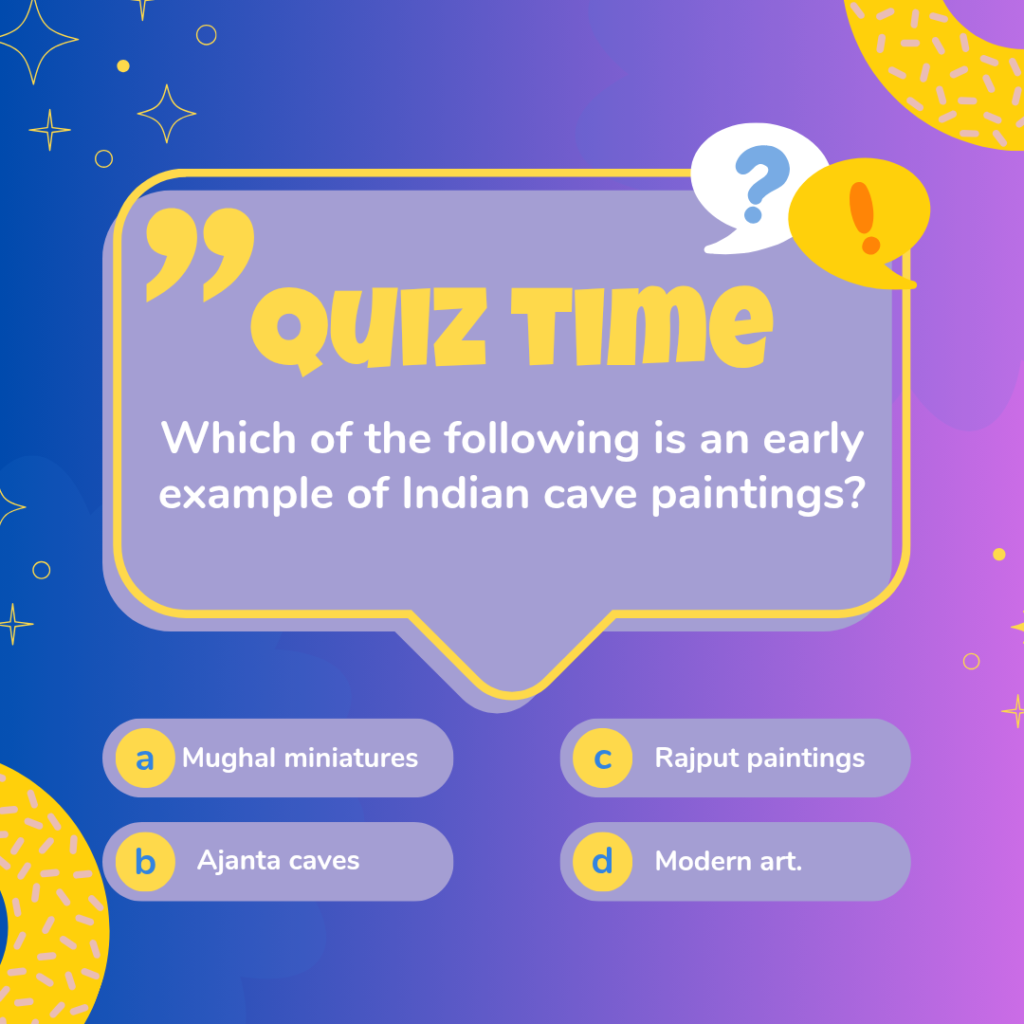
Think you know India’s history? Journey beyond the familiar and test your knowledge of its hidden past! This quiz explores the forgotten kingdoms, remarkable figures, and intriguing customs that often remain untold. Are you ready to unveil India’s secret history?
- Name the pre-Indus Valley Civilization, known for its distinct pottery and agricultural practices, existed in the Mehrgarh region?
- a) Harappa
- b) Mehrgarh
- c) Mohenjo-daro
- d) Lothal
- The Kakatiya dynasty of south India is particularly known for?
- a) Their elaborate temple architecture, including the Ramappa Temple.
- b) Their naval expeditions to southeast Asia.
- c) Their development of advanced textile industries.
- d) Their patronage of Persian literature.
- In South India, which dynasty was famous for constructing the Brihadeeswarar Temple in Thanjavur?
- a) Vijayanagara
- b) Chalukya
- c) Chola
- d) Pallava
- Which of the following is an early example of Indian cave paintings?
- a) Mughal miniatures
- b) Modern art.
- c) Ajanta caves
- d) Rajput paintings
- Which scholar’s work on surgery, “Sushruta Samhita,” is considered a foundational text in ancient Indian medicine?
- a) Charaka
- b) Sushruta
- c) Nagarjuna
- d) Patanjali
- The silk road, an ancient trade network, significantly impacted India by?
- a) Promoting only military alliances
- b) Facilitating the exchange of goods and ideas
- c) Isolating it from foreign cultures
- d) Hindering the spread of Buddhism
7. The queen of Ullal, Rani Abbakka Chowta, is known for her successful resistance against the Portuguese in the 16th century.
- True
- False
8. The “Iron Pillar” in Delhi, located within the Qutub complex, is known for its resistance to rust over centuries.
- True
- False
9. The Sangam Age in South India (circa 300 BCE – 300 CE) is primarily known for?
- a) Its advanced metallurgical techniques
- b) Its rich literary tradition, including Tamil poetry
- c) Its development of complex mathematical systems
- d) Its extensive trade with the Roman Empire
10. The city of Vijayanagara was known for its highly advanced urban planning and water management systems.
- True
- False
ANSWERS
- b) Mehrgarh (Mehrgarh is one of the earliest Neolithic sites in South Asia, dating back to around 7000 BCE. It predates the Indus Valley Civilization and provides valuable insights into the early development of agriculture and settled life in the region.)
2. a) Their elaborate temple architecture, including the Ramappa Temple. (The Kakatiyas are renowned for their architectural achievements, notably the Ramappa Temple, a UNESCO World Heritage Site, and their intricate irrigation works.)
3. c) Chola (The Chola dynasty, specially in the region of Raja Raja Chola I, was renowned for its magnificent temple architecture, with the Brihadeeswarar Temple being a prime example.)
4. c) Ajanta Caves (The Ajanta Caves are known for their ancient Buddhist murals,showcasing remarkable artistic skills.)
5. b) Sushruta (Sushruta’s work detailed surgical procedures, instruments, and techniques, demonstrating advanced medical knowledge.)
6. b) Facilitating the exchange of goods and ideas (The silk road connected India to Central Asia, China, and the West, leading to cultural and economic exchange.)
7. True (Rani Abbakka Chowta fiercely defended her kingdom against the Portuguese, winning several battles and becoming a symbol of early Indian resistance against European colonial powers.)
8. True (The pillar’s composition and the precise metallurgical techniques used in its creation have allowed it to withstand corrosion for an exceptionally long time.)
9. b) Its rich literary tradition, including Tamil poetry (The Sangam Age is celebrated for its extensive body of Tamil literature, including poems that provide insights into the social political, and economic life of the time.)
10. True (Vijayanagara’s ruins reveal sophisticated urban design, including intricate water channels and reservoirs.)
Great job completing the quiz! Hopefully, you had fun uncovering some of India’s less-known historical facts and maybe even learned a thing or two along the way. Keep exploring the wonders of history!
To learn more about history of India you can read our detailed article here: https://studybfly.com/ancient-history-of-india-insigh/

